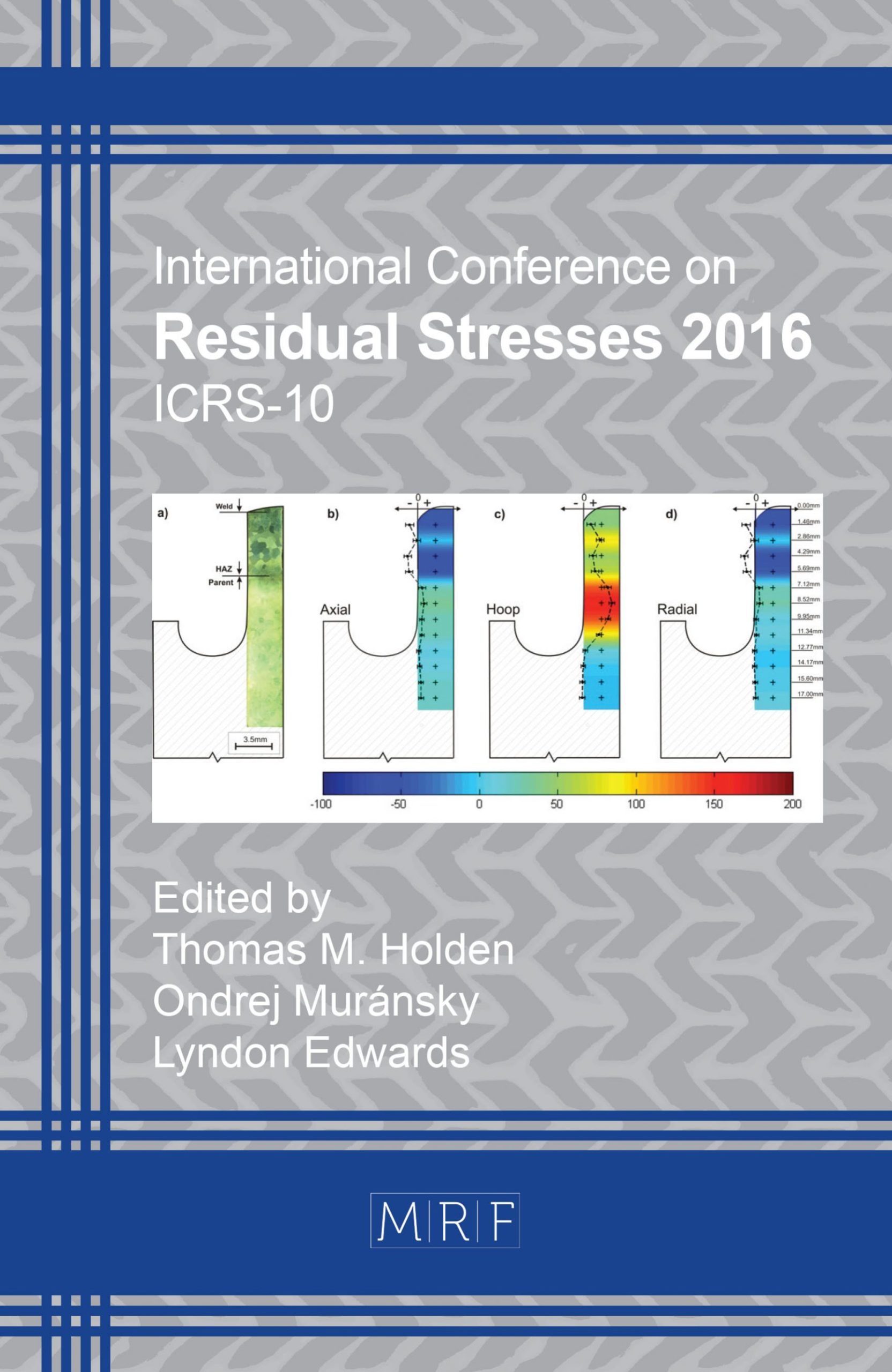Evaluation of Thickness and Residual Stress of Shallow Surface Regions from Diffraction Profiles
W. Pfeiffera, E. Reisacher
download PDFAbstract. Residual stresses resulting from surface treatment methods like shot peening generally show a more or less steep stress gradient versus depth. X-ray diffraction is the most used method for depth profiling in case of near-surface stress gradients due to the small penetration depth of X-rays resulting in a high depth resolution. When the stress gradient is very steep and the stressed surface layer is in the range of the penetration depth of the X-rays, asymmetric diffraction lines may occur and determination of the diffraction line position has to be done with great care. In case of the stressed surface layer being thinner than the penetration depth of the X-rays a (partial) splitting of the diffraction line may occur which may allow to separately calculate both the mean stresses of the layer and the base material and additionally to determine the thickness of the stressed surface layer. For a shot peened silicon nitride ceramic the evaluation of the mean stress in the thin surface layer, the stress in the underlying base material and the thickness of the stressed surface layer on basis of profile fitting methods is demonstrated with special emphasis on the influence of the method used for determining the diffraction line position.
Keywords
Residual Stresses, Stress Gradient, Diffraction Profile, Shot Peening, Ceramic
Published online 12/22/2016, 6 pages
Copyright © 2016 by the author(s)
Published under license by Materials Research Forum LLC., Millersville PA, USA
Citation: W. Pfeiffera, E. Reisacher, ‘Evaluation of Thickness and Residual Stress of Shallow Surface Regions from Diffraction Profiles’, Materials Research Proceedings, Vol. 2, pp 317-322, 2017
DOI: http://dx.doi.org/10.21741/9781945291173-54
The article was published as article 54 of the book Residual Stresses 2016
![]() Content from this work may be used under the terms of the Creative Commons Attribution 3.0 licence. Any further distribution of this work must maintain attribution to the author(s) and the title of the work, journal citation and DOI.
Content from this work may be used under the terms of the Creative Commons Attribution 3.0 licence. Any further distribution of this work must maintain attribution to the author(s) and the title of the work, journal citation and DOI.
References
[1] C. Genzel, Non-Destructive Analysis of Residual Stress Gradients ij(z) in the Near-Surface Region by Diffraction Methods – Problems and Attempts at Their Solution, Proc. Of the 5th Intern. Conf. On Residual Stresses (1997) 514-521.
[2] B. Eigenmann, Non-Destructive and Partially Destructive Determination of Residual Stress State with Steep Stress Gradients, Advances in X-Ray Analysis 40 (1997).
[3] M. Härting, A Seminumerical Method to Determine the Depth Profile of the Three Dimensional Residual Stress State with X-Ray Diffraction, Acta Mater., Vol 40, No 4 (1998) 1427-1430. http://dx.doi.org/10.1016/S1359-6454(97)00284-X
[4] W. Pfeiffer, The role of the peak location method in X-ray stress measurement, Proc. of 4th International Conference on Residual Stresses; James, M.R. (Ed.); Society for Experimental Mechanics, Bethel, USA (1994) 148-155.
[5] M. Klaus, Röntgendiffraktometrische Ermittlung tiefenabhängiger Eigenspannungsverteilungen in Dünnschichtsystemen mit komplexem Aufbau. Diss. Tu Berlin (2009).
[6] M. Klaus, et al., Application of energy-dispersive diffraction to the analysis of highly Inhomogeneous residual stress fields in thin film structures, Powder Diffraction 24 [Suppl.1] (2009), S82-S86. http://dx.doi.org/10.1154/1.3134362
[7] P.D. Evenschor, Zur röntgenographischen Ermittlung von Dehnungen beim Vorliegen von Dehnungsgradienten, Z. Metallkde. 74 (1983) 119.































